
Installing new concrete steps can enhance your home’s curb appeal. Learn all the factors that can affect your concrete steps cost.
Take a crack at identifying these concrete fractures
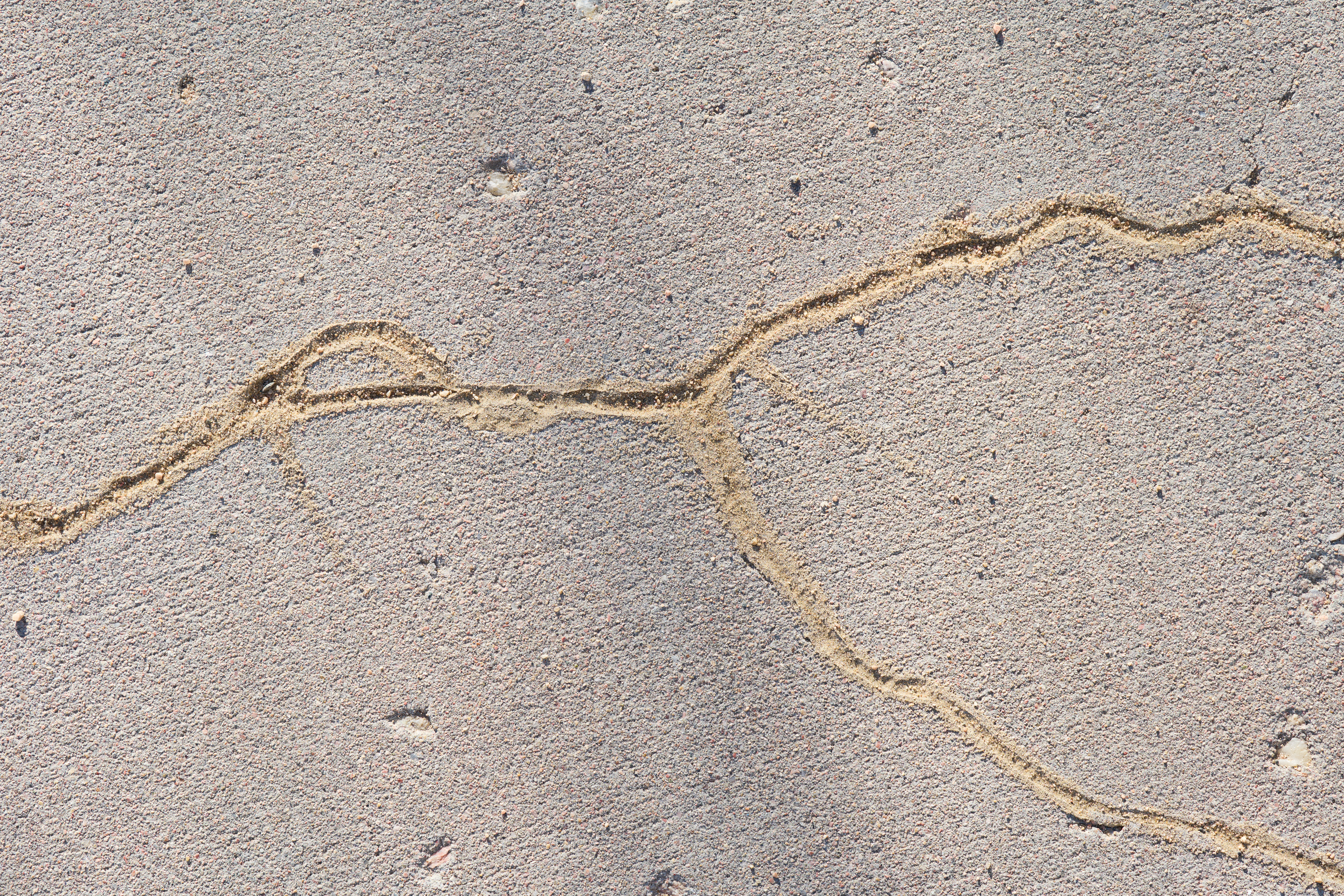

Knowing the different types of cracks in concrete can help diagnose the issue with the concrete in and around your home so you know the severity of the issue and how to handle it. The more you know about how to prevent concrete cracks, the more you know about how to prevent concrete cracks. Read on for more information about some of the most common types of cracks in concrete, from what they look like to what may have caused them.
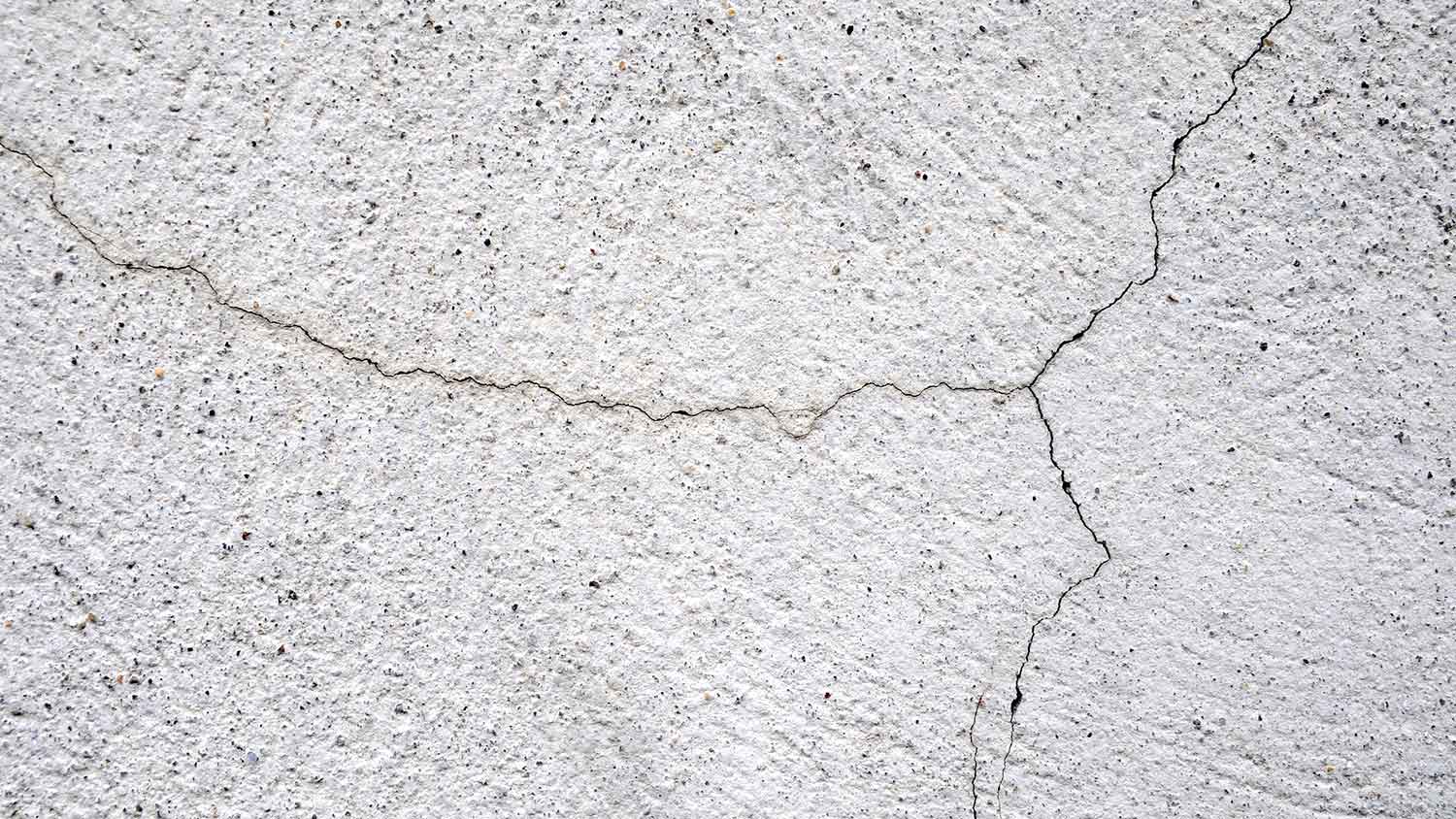
Hairline cracks are very thin cracks that can develop in concrete foundations as they cure. Hairline cracks are caused by moisture loss that happens as the concrete dries—this can happen if the isn’t wasn’t properly mixed. While these cracks are quite thin, they can also run deep. They typically don’t cause any problems with the foundation’s stability but can lead to leakages down the line.

Settling, or settlement, cracks are fairly thin, though not as thin as a hairline crack. They often appear wider at the bottom and top and thinner in the middle and can occur multiple times within the same wall. Settling cracks occur when a space exists between the concrete and the ground beneath it. In other words, the ground below was not properly prepared. Lack of preparation could mean there is an improper soil type, imposing tree roots, or previously placed concrete that has been left behind.
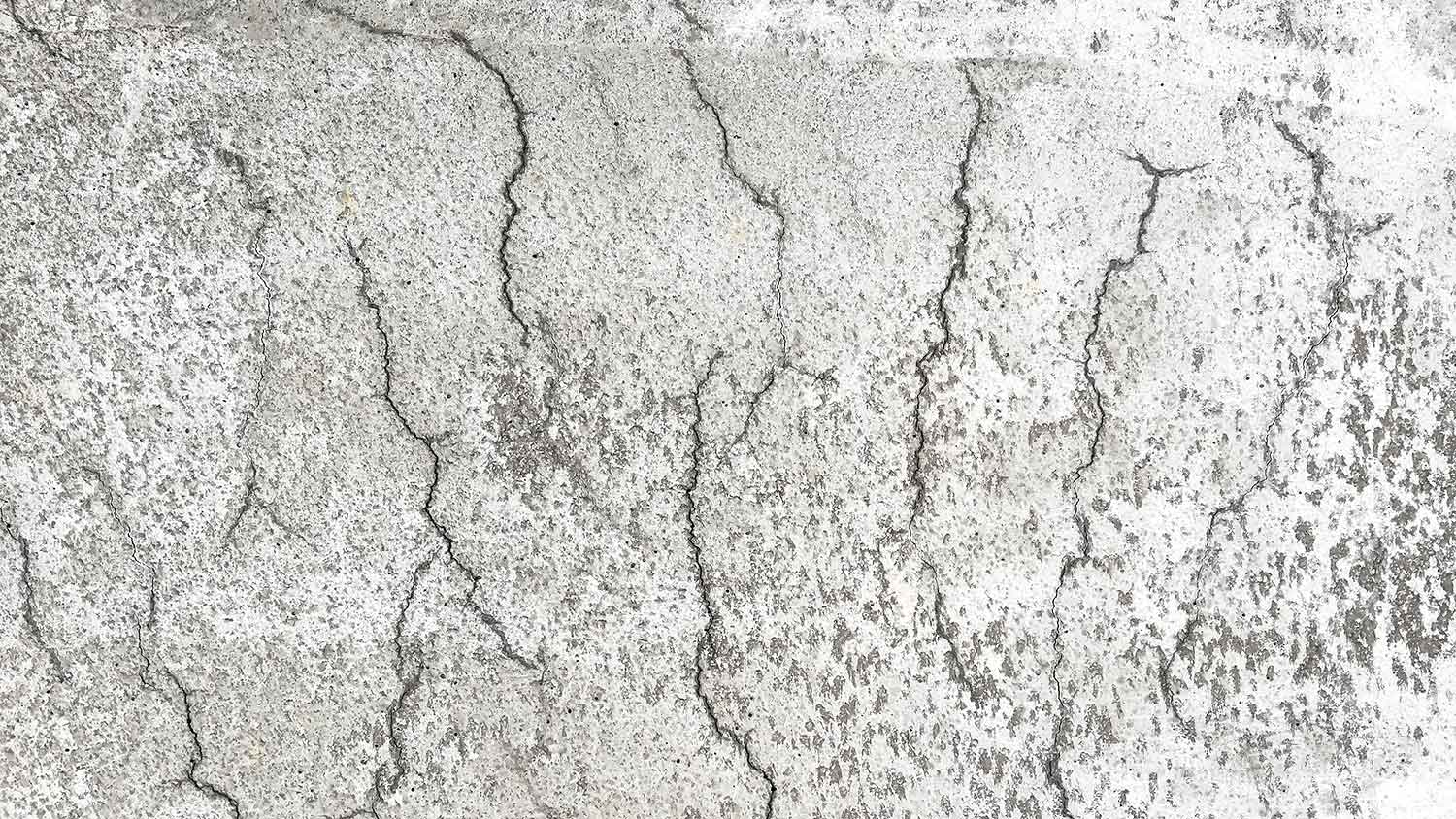
Despite its name, concrete shrinkage cracks don’t appear shrunk—the name refers to the cause of the crack itself. These cracks are fairly slim and short and can spread both vertically and horizontally. This type of concrete crack is caused by shrinking that occurs when concrete is in its “plastic” state. The plastic state refers to the concrete’s state before hardening. Before it hardens, it is full of water. And if it dries too quickly it can leave empty spaces that make the concrete weak and more crack-prone.

Of the types of cracks in concrete, a heaving crack is one that appears only on concrete floors/ground rather than on walls. Heaving cracks spread both vertically and horizontally and span as much as the whole length of a foundation, depending on their severity. Heaving cracks occur when the soil under the foundation expands due to freezing or there is excess moisture. If either of these things happens, the moving foundation can cause cracks.
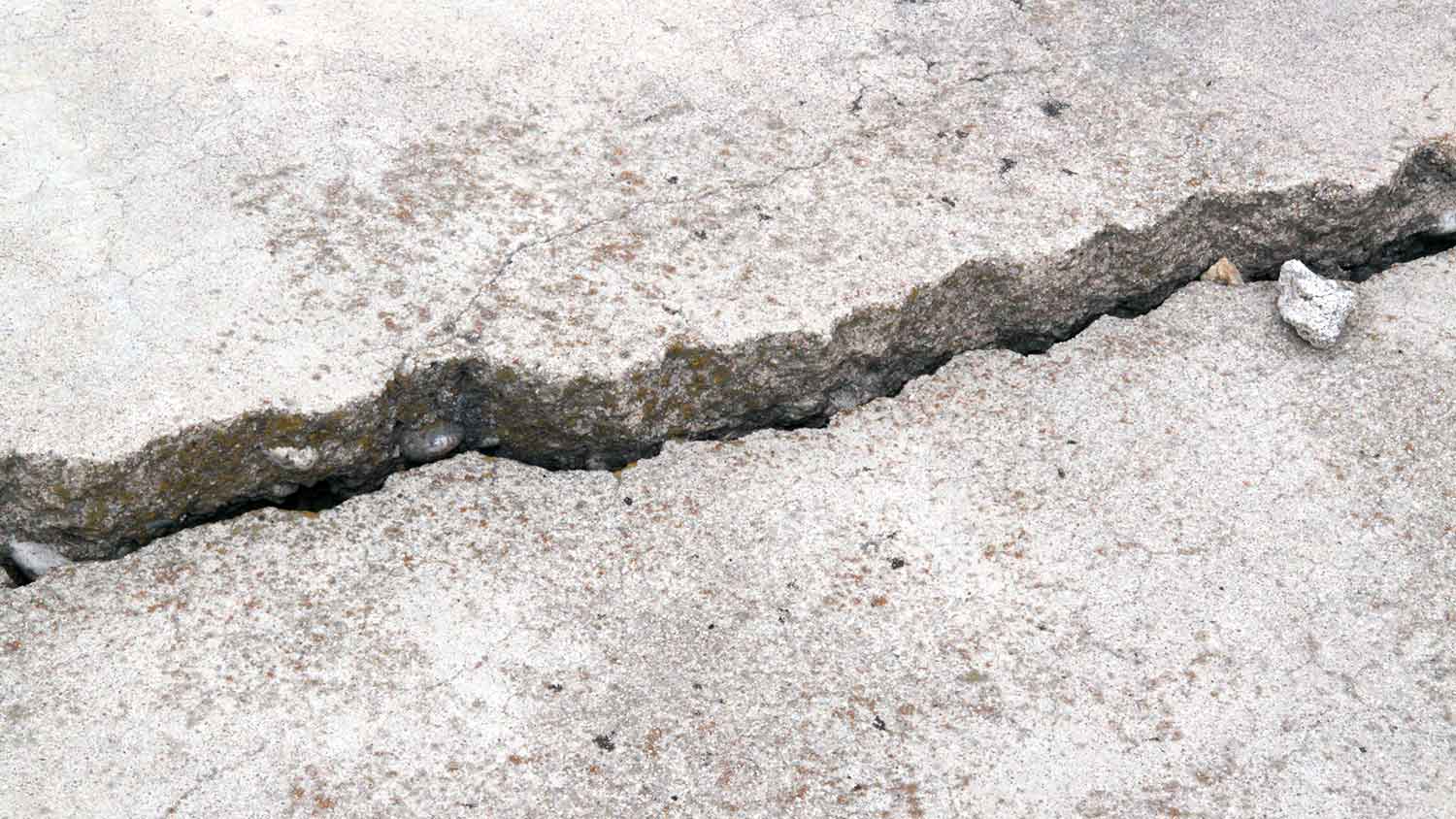
Expansion concrete cracks run both horizontally and diagonally, appearing jagged and running deep. Expansion cracks are caused by heat—this is also referred to as thermal expansion. Essentially, what happens is the heat causes the concrete to expand and push against anything in its vicinity. With consistent seasonal temperature changes, this eventually leads to the concrete expanding so much that cracks are formed.
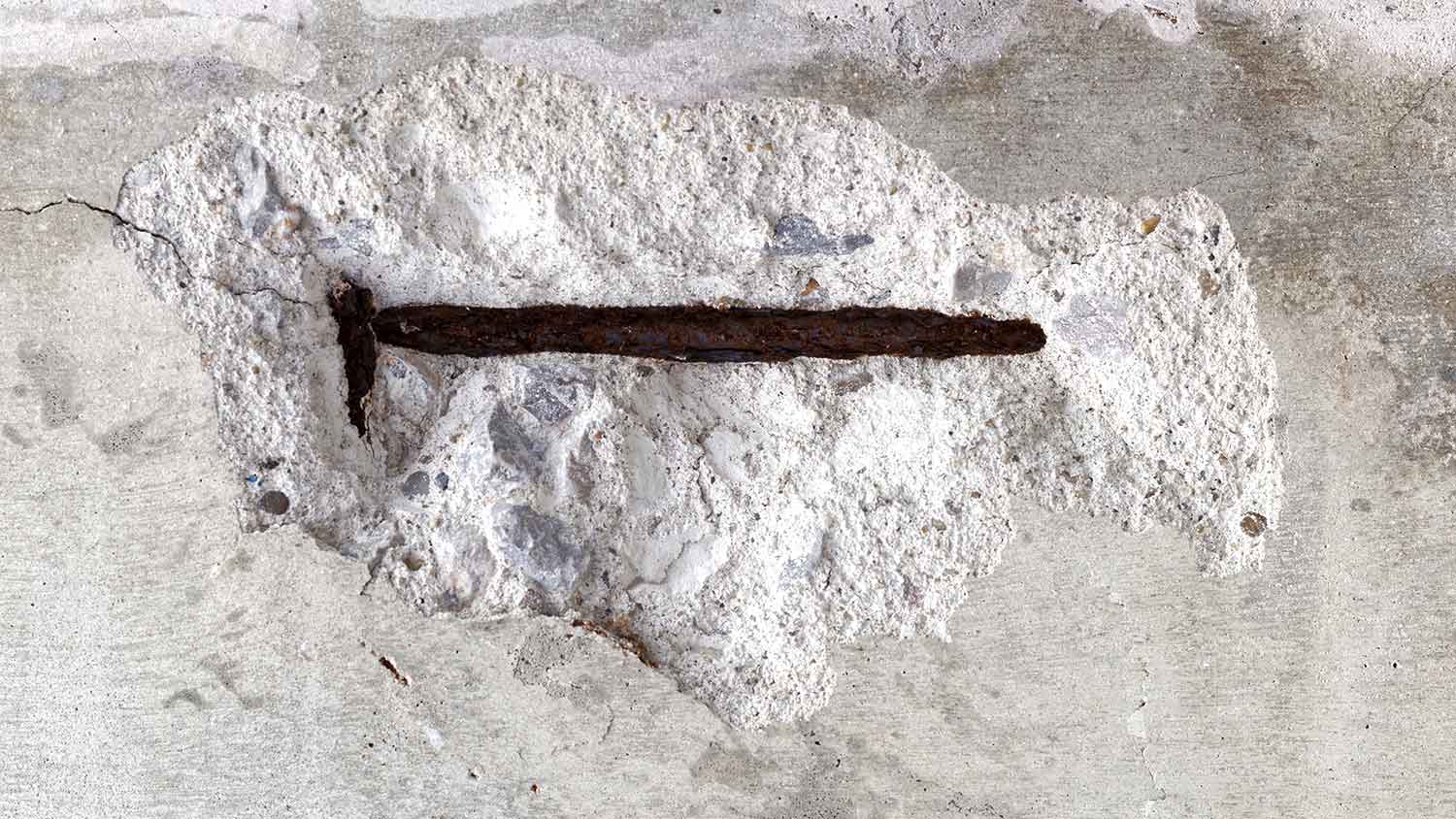
This particular type of crack in concrete doesn’t quite take on the look of a standard concrete crack. Instead, they appear as the concrete flaking and chipping, leaving large chunks of the concrete missing from the concrete. Spalling concrete cracks are caused by pressure underneath the surface of the concrete. The pressure itself could be due to a variety of factors, such as corrosion or joints that were not properly constructed.

Scaling concrete cracks fare similarly to spalling cracks in their appearance, but scaling cracks are smaller, appearing as localized peeling or flaking. Though it begins as a localized occurrence, enough localized cracks can merge and become a bigger one. Scaling cracks are caused by water expanding when freezing or thawing. That being said, having concrete professionally and properly installed should prevent issues such as scaling. Consider looking into concrete companies near you to ensure you’re getting the best concrete installation that won’t deteriorate.
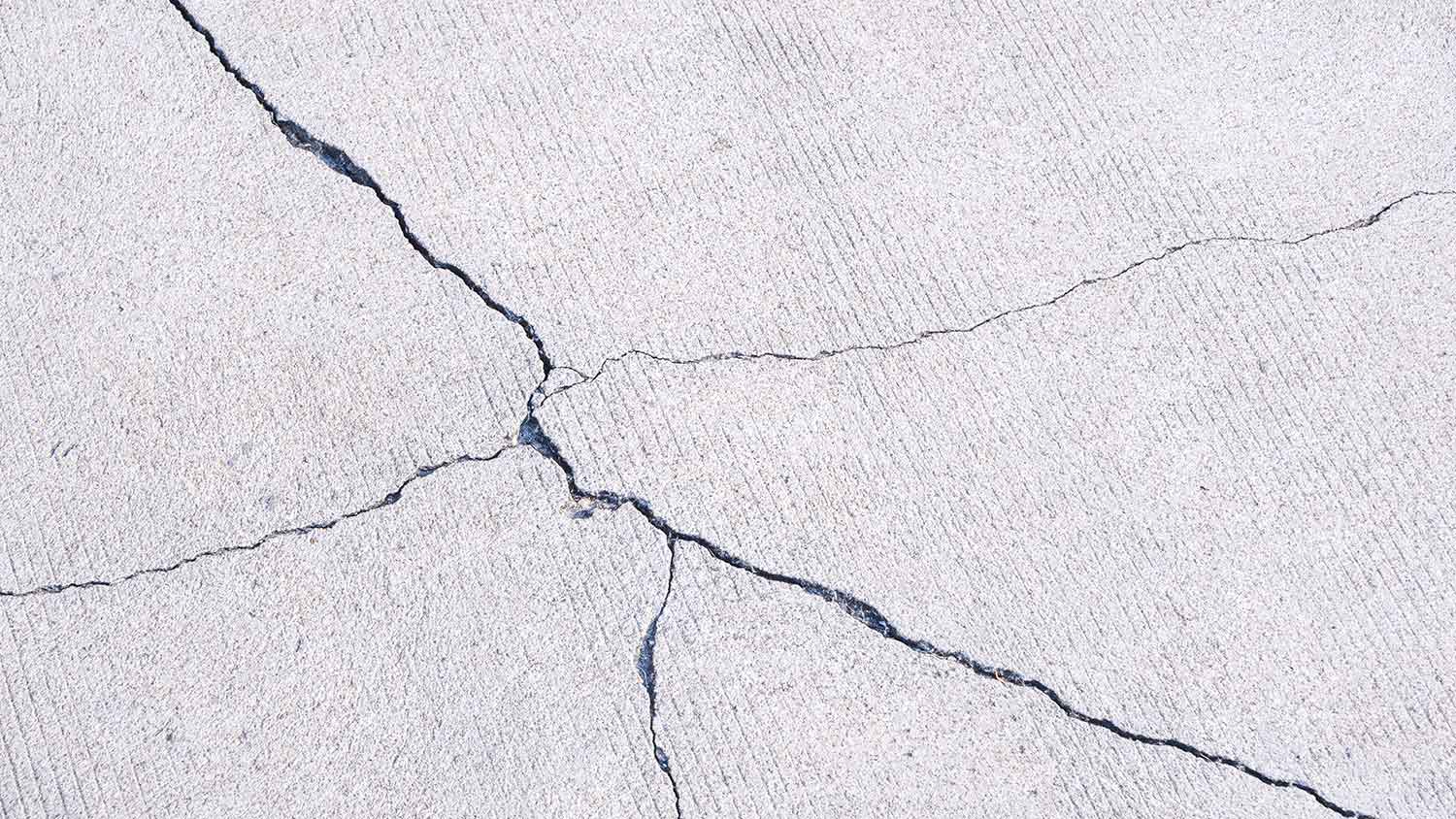
An overloading concrete crack appears as your standard crack—going both vertically and horizontally—with the potential to lead to the foundation crumbling if not dealt with. An overloading concrete crack is caused by the concrete slab being overloaded with too much weight, can cause serious safety problems, and should be dealt with immediately.
From average costs to expert advice, get all the answers you need to get your job done.

Installing new concrete steps can enhance your home’s curb appeal. Learn all the factors that can affect your concrete steps cost.

Discover how much concrete walls cost based on factors like their size, material, location, design, and local labor rates.

Looking to spruce up your home’s exterior and add some value? Use this concrete walkway cost guide to estimate the price of installing new paths.

Learn how to repair those naturally occuring concrete cracks and restore your concrete driveway, walkway, or other surface.

Concrete efflorescence can affect the stability of structures. Learn about concrete efflorescence, including ways to repair it and prevent it from happening in the future.
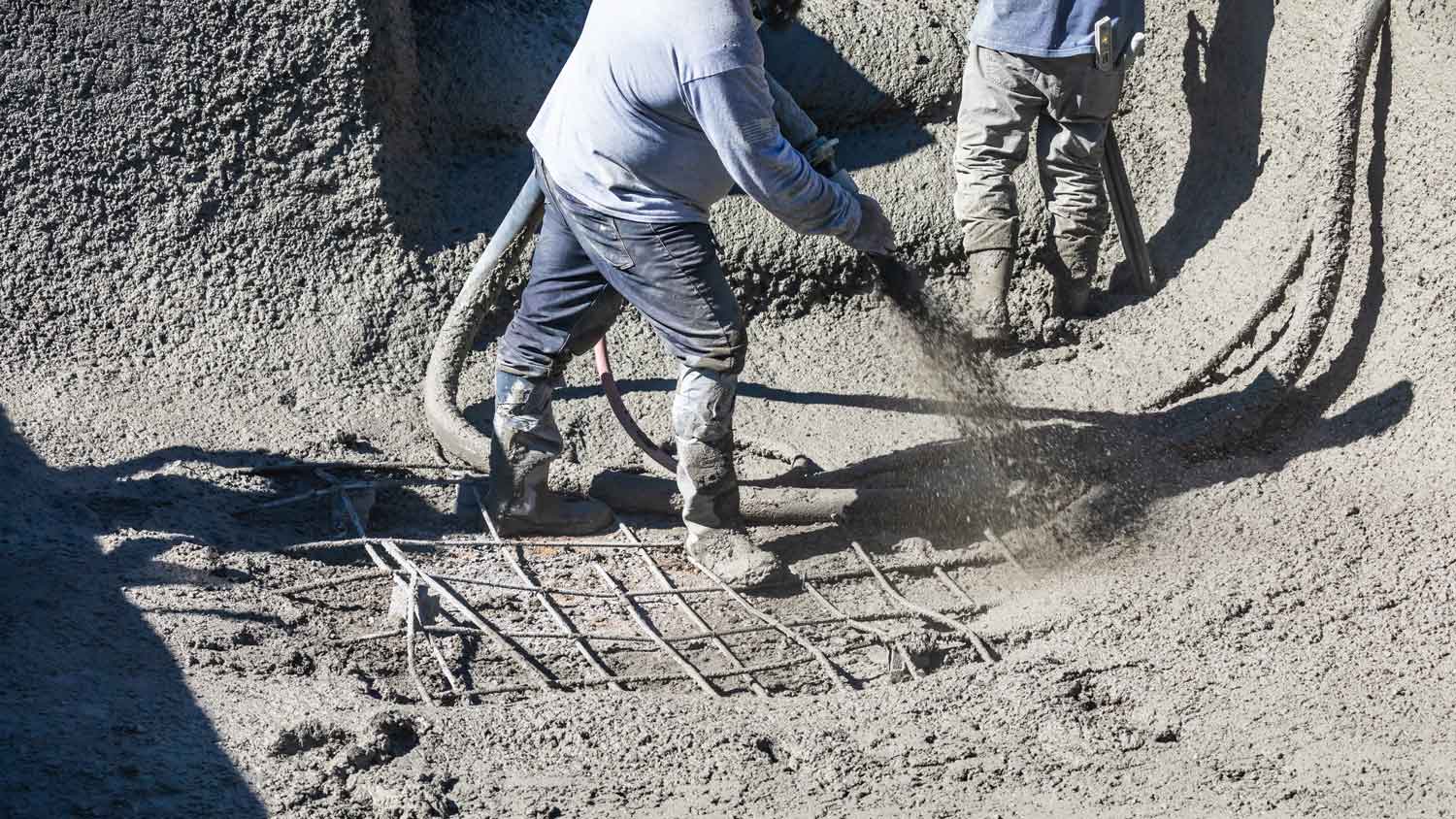
Learn about the average cost of shotcrete, including installation, labor, and material expenses. Discover how to budget, save, and select the right pro.